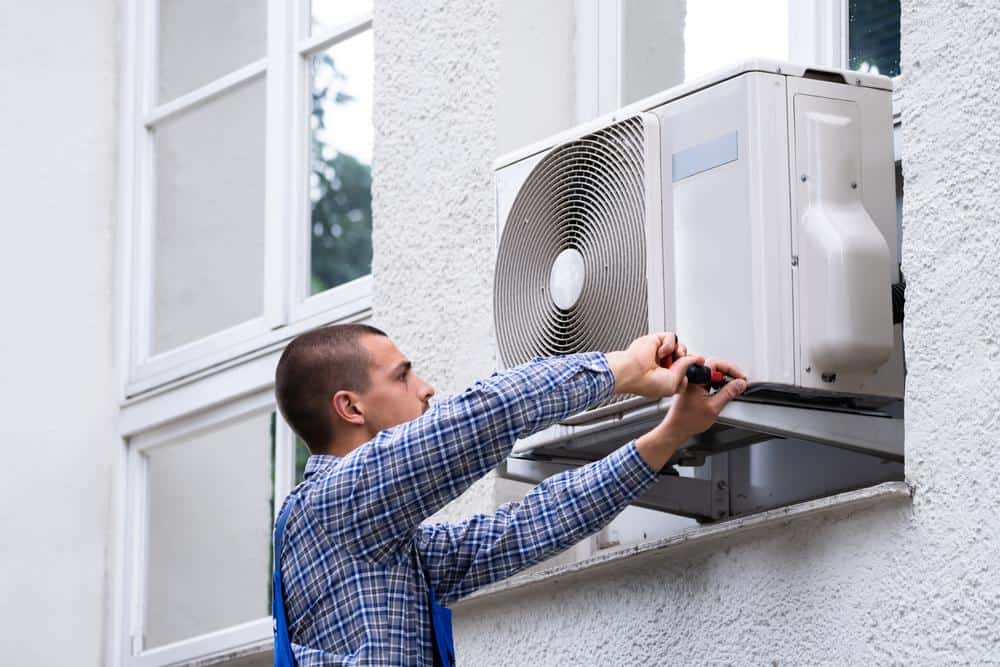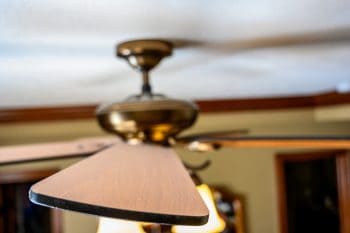
Air conditioning units are a common feature in many homes and offices, providing relief from the heat and improving the comfort of indoor spaces. However, if you’ve ever owned a window AC unit, you might have noticed that these devices sometimes hold water, leading to potential leaks and other issues. This article provides an in-depth look at why window AC units hold water, the potential problems this can cause, and how to prevent or address these issues.
Window AC units hold water due to the removal of heat and moisture from the air inside the room. This moisture condenses on the cold evaporator coil as the air conditioner cools the room. The water is usually drained through drain holes or a “slinger ring” that throws the water against the condenser coils. However, issues like a faulty drainage system, blocked condensation drain, damaged drain pan, dirty air filter, improper installation, or low refrigerant levels can lead to water accumulation in the unit.
How Window AC Units Work
Before diving into the specifics of water accumulation, it’s essential to understand how a window AC unit works. These devices operate using the same principles as other air conditioning systems, leveraging refrigeration properties to achieve the desired cooling effect.
A window AC unit consists of several components, including a thermostat, a fan or blower, tubing filled with refrigerant, a compressor, an evaporator coil, and a condenser coil. When the room temperature rises, it triggers the thermostat, which turns on the blower. Room air is pulled into the unit and moves over the cold refrigerant coils, cooling the air as it passes over them.
Why Does a Window AC Unit Hold Water?
Water accumulation in a window AC unit is due to the removal of heat and moisture from the air inside the room. The moisture collects on the evaporator coil and needs to be drained properly to prevent water leakage. This water comes from the humidity in the air, which condenses on the cold evaporator coil as the air conditioner cools the room.
Water is usually drained from window AC units through drain holes located under the exterior part of the unit that hangs out of the window. These drain holes help remove the collected moisture from the unit. Some window AC units also have a “slinger ring” around the rear fan blade, which picks up water from the bottom of the pan and throws it against the condenser coils. This design feature helps improve the efficiency of the unit by reducing heat on the coils and removing some of the condensation and rainwater from the pan.
Potential Issues with Water Accumulation
Water accumulation in a window AC unit can lead to several potential issues, including:
- Water leakage inside the home: This can be caused by a faulty drainage system or frozen evaporator coils.
- Blocked condensation drain: Dust from the air can mix with water and create an obstruction.
- Damaged drain pan or blocked water outlet: This can produce drips in the wrong places or cause an overflow.
- Dirty air filter: This prevents air from circulating freely around the evaporator coils, causing the coils to ice over and eventually leak water.
- Improper installation: If the unit is not installed correctly, it can tilt inward or lack proper insulation, leading to improper drainage and water accumulation.
- Low refrigerant levels: This can cause the evaporator coil to freeze and result in water leakage when the ice melts.
Preventing and Addressing Water Accumulation
To prevent or address water accumulation issues in a window AC unit, follow these steps:
- Clean or replace the air filter: A dirty air filter can prevent air from circulating freely around the evaporator coils, causing the coils to ice over and eventually leak water. Clean the air filter at least once a month and replace it every three months.
- Clear the drain hole: A clogged drain hole can cause water to accumulate inside the unit and eventually leak. Locate the drain hole under the exterior part of the unit that hangs out of the window and clear any blockages.
- Ensure proper installation: Make sure the window AC unit is installed with a slight slope away from the building to allow water to drain properly. If the unit is tilted inward or lacks proper insulation, it can cause water to accumulate and leak inside your home.
- Check for damaged or blocked components: Inspect the drain pan, water outlet, and condensation pipe for damage or blockages that could cause water to overflow.
- Monitor refrigerant levels: Low refrigerant levels can cause the evaporator coil to freeze, leading to water overflow when it melts. If you suspect low refrigerant levels, consult a professional to check and recharge the system if necessary.
By following these steps, you can prevent and address water accumulation issues in your window AC unit and ensure its efficient operation. Regular maintenance and inspections can help identify and address potential problems before they lead to water accumulation and damage.
Conclusion
Understanding why window AC units hold water can help you maintain your unit better and prevent potential problems. By regularly cleaning and inspecting your AC unit, ensuring proper installation, and monitoring refrigerant levels, you can keep your AC unit running efficiently and prolong its lifespan. If you notice any signs of water accumulation, address the issue promptly to prevent further damage to your AC unit and your home.
Frequently Asked Questions
What is a refrigerant and why is it important in an AC unit?
A refrigerant is a substance or mixture used in the cooling cycle of air conditioning systems. It absorbs heat from the room and releases it outside, thereby cooling the room. Without a sufficient amount of refrigerant, your AC unit will not be able to cool your space effectively.
How can I tell if my window AC unit is installed correctly?
An appropriately installed window AC unit should have a slight slope away from the building to allow water to drain properly. If your unit is tilted inward or lacks proper insulation, it could lead to water accumulation and leakage inside your home.
How often should I clean my window AC unit?
Regular maintenance, including cleaning, is crucial for the efficient operation of your window AC unit. It is generally recommended to clean the air filter at least once a month and replace it every three months. Additionally, you should check for and clear any blockages in the drain hole regularly.
What should I do if my window AC unit is leaking water inside my home?
If your window AC unit is leaking water inside your home, it may be due to a faulty drainage system, a clogged drain hole, or low refrigerant levels. You should check these components and clear any blockages or consult a professional if you suspect low refrigerant levels.
Can I recharge the refrigerant in my window AC unit myself?
It is generally not recommended for non-professionals to recharge the refrigerant in an AC unit. Handling refrigerant requires special training and equipment, as it can be dangerous. If you suspect your window AC unit has low refrigerant levels, you should consult a professional.












